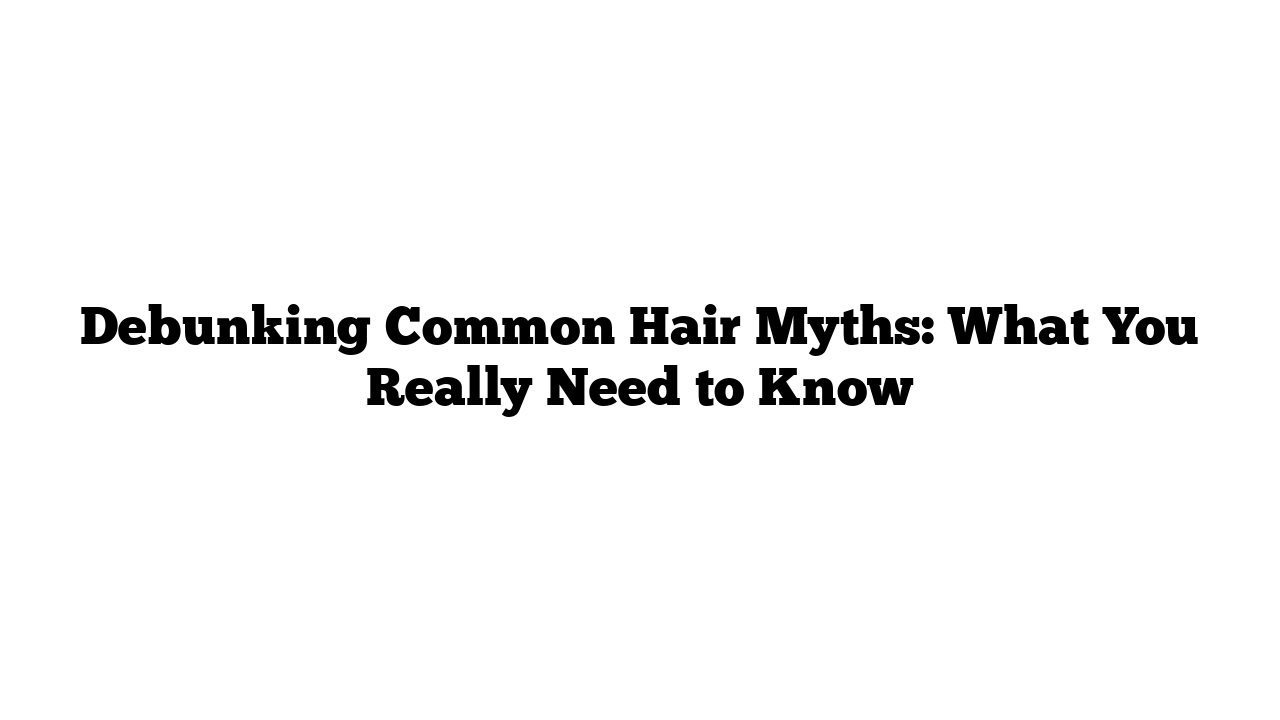Many myths about hair circulate in everyday conversation, and separating fact from fiction can be confusing. As a doctor, I’m here to clarify some of the most common misconceptions about hair care. Let’s dive into 15 hair myths and discover the truth behind them.
Myth 1: Hair Grows Faster When You Cut It
Myth. Contrary to popular belief, cutting your hair does not speed up its growth. Anabel Kingsley, a trichologist and brand president at Philip Kingsley, explains that hair typically grows about half an inch per month. Our scalps contain around 120,000 hair follicles, each in different growth phases. Cutting hair regularly may help it look healthier but won’t increase its growth rate.
Myth 2: Dandruff Is Caused by a Dry Scalp
Myth. Many people think dandruff comes from a dry scalp, but that’s not true. Dandruff, also known as seborrheic dermatitis, is often due to an overgrowth of yeast called Malassezia, which thrives on oil. The more oil on your scalp, the more flakes you might see. Treatments include targeted shampoos, scalp masks, and checking your diet.
Myth 3: Washing Your Hair Every Day Is Bad for You
Myth. Washing your hair daily isn’t inherently bad. It’s essential to treat your scalp as you would your skin—cleansing and hydrating it properly. If you’re active or have fine hair, daily washing might be necessary to keep your scalp fresh. On the other hand, coarser hair types may not need frequent washing, as oil can have trouble reaching the ends.
Myth 4: Shaving Makes Hair Grow Back Thicker and Darker
Myth. Shaving doesn’t change the thickness or color of hair. When you shave, you cut hair at a thicker point, which may give the illusion of being coarser. The hair will still grow back with its natural tapering.
Myth 5: Air-Drying Is Better Than Blow-Drying
Myth. This depends on your method. If air-drying leads to scrunching or pulling, it can cause damage. Proper blow-drying can be safe if done correctly, using heat protectant sprays and maintaining a distance of at least six inches from your hair.
Myth 6: Shampooing Causes Hair Loss
Myth. Shampooing does not lead to hair loss. Instead, it dislodges hairs that were already loose. Losing up to 100 hairs per day is normal. Regular shampooing keeps the scalp healthy, supporting new hair growth.
Myth 7: Only Shaving Causes Ingrown Hairs
Myth. Ingrown hairs can result from any hair removal method that breaks hair instead of pulling it out from the root. Waxing, for instance, can also cause ingrown hairs if not done correctly.
Myth 8: Stress Causes Gray Hair
There’s some truth to this, but it’s largely a myth. Genetics play a significant role in when you go gray. However, stress can accelerate this process. Hair color is determined by melanin, and once the hair bulb stops producing it, the hair turns gray.
Myth 9: Plucking Gray Hair Causes More to Grow
Myth. Plucking a gray hair won’t cause two to grow back in its place. Often, people just start noticing more gray hairs after plucking one. However, plucking repeatedly can damage the hair follicle and lead to hair loss.
Myth 10: You Can Repair Split Ends
Myth. Once hair splits, there’s no repairing it. Split ends result from wear and tear, including heat damage and environmental exposure. The only true remedy is to cut them off.
Myth 11: Baldness Is Only Inherited from Your Mother
Myth. Baldness can be inherited from both sides of your family. The baldness gene may come from your mother, father, or even grandparents. Various factors, including hormones, play a role in hair loss.
Myth 12: More Brushing Equals Healthier Hair
Myth. Over-brushing can harm your hair by causing microtears along the shaft. It’s essential to detangle gently, especially with textured hair. Use a brush with rounded prongs to avoid damage.
Myth 13: Oils Promote Hair Growth
Myth. While certain oils can improve the appearance of your hair, they do not directly stimulate growth. Consuming healthy oils is beneficial for scalp health, but applying them topically may not provide the desired results.
Myth 14: Wigs, Weaves, and Braids Always Protect Hair
Myth. While these styles can offer a break from manipulation, they can also cause damage if not done correctly. Heavy or tight styles can lead to breakage. It’s essential to practice responsible protective styling.
Myth 15: Tender-Headedness Is Normal
Myth. Tenderness during hair care can indicate underlying issues like inflammation. It’s crucial to pay attention to discomfort and consult a trichologist or dermatologist if you experience persistent scalp issues.
By understanding these myths, you can make informed choices about your hair care. Remember, a healthy scalp is key to vibrant hair! For more insights, visit medicaltimes.io for articles on hair care and health tips.
References
Feel free to explore and learn more about caring for your hair!
